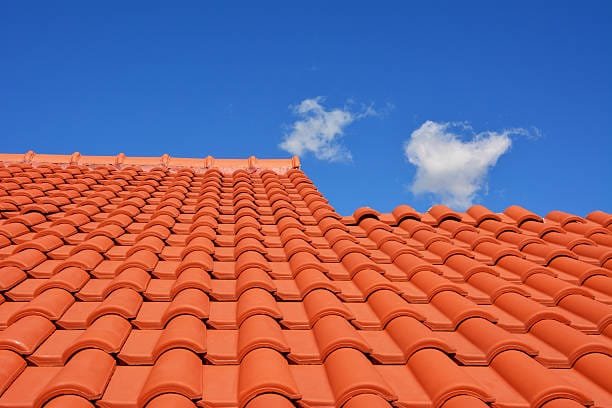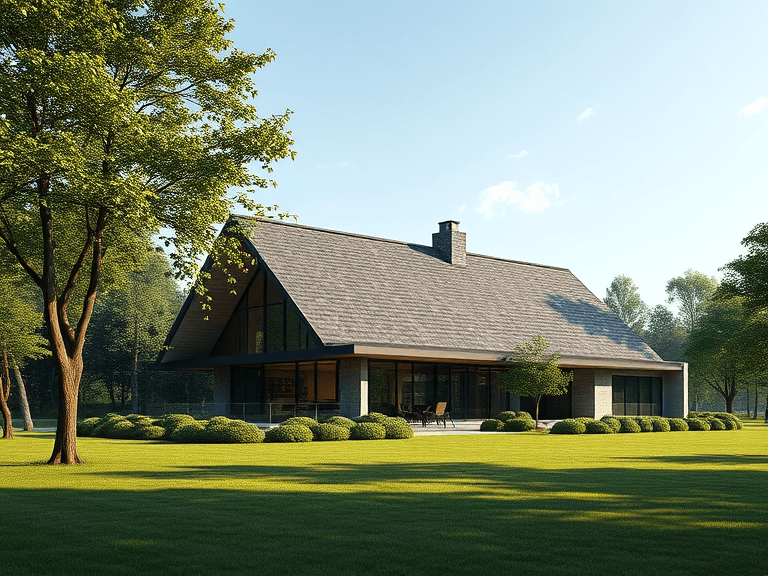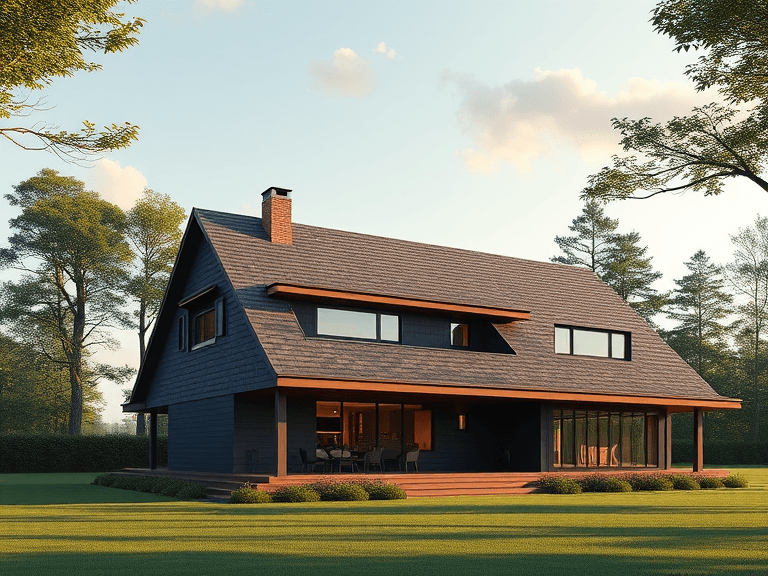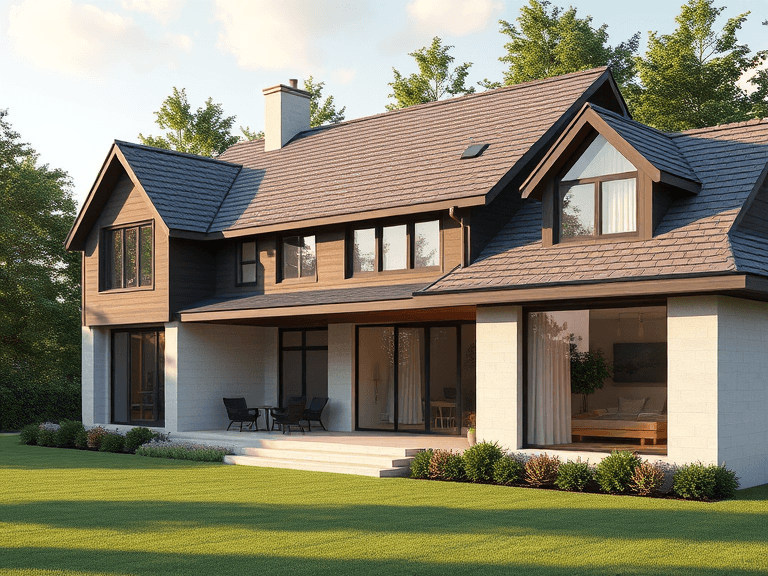
Tile roofing is a popular choice among homeowners and builders owing to its distinctive appearance and long-lasting durability. Defined as a roofing system made from fired clay, concrete, or other materials, tile roofs have evolved into a favored option for both residential and commercial buildings. The architecture of tile roofing varies, with two primary types: clay tiles and concrete tiles. Clay tiles are known for their traditional aesthetic and ability to withstand extreme weather, while concrete tiles offer versatility and can mimic the look of more expensive materials.
Tile roofs have been utilized for centuries, with their roots traced back to ancient civilizations, particularly in regions with warmer climates. Their historical significance is underlined by numerous historic structures adorned with tile roofing, showcasing how they complement a variety of architectural styles. Today, homeowners are increasingly drawn to tile roofing not only for its robustness but also for its stylistic appeal, as tile roofs come in a multitude of colors, shapes, and textures, allowing for customization that can enhance the overall look of a building.
In addition to aesthetics, tile roofing provides effective insulation, making it an energy-efficient option in hotter climates. The natural materials used in tile roofs also contribute to their sustainability. However, the installation and weight of tile roofs necessitate careful consideration, especially for older structures that may need reinforcement. Common applications include Mediterranean-style homes, commercial buildings, and homes in regions prone to hurricanes or wildfires, where tile roofing can offer enhanced protection. Overall, the exploration of tile roofing installation reveals its multifaceted benefits and versatility as an enduring choice in roofing solutions.
Advantages of Tile Roofing
Tile roofing installation offers a variety of benefits that make it an appealing choice for homeowners and builders alike. One of the primary advantages is its exceptional longevity. Tile roofs are known to last several decades, often exceeding 50 years with proper maintenance. This long lifespan can provide a sound investment, reducing the need for frequent replacements common with other roofing materials.
Durability is another critical benefit of tile roofing. Tiles are designed to withstand extreme weather conditions, including heavy rain, strong winds, and even hail. This resilience ensures that homes remain protected from the elements, significantly reducing the risk of water damage and the associated costs of repairs. Additionally, tile roofs are non-combustible, providing an extra layer of safety in fire-prone areas.
Low maintenance requirements further enhance the appeal of tile roofing installation. Unlike asphalt shingles that may require regular inspections and replacement, tile roofs generally need minimal upkeep. Periodic cleaning and inspections are usually sufficient to maintain their integrity, allowing homeowners to spend less time and money on maintenance.
Another advantage of tile roofing is its natural resistance to pests such as termites and rodents. The materials used in tile construction are not conducive to nesting or damage from these pests, thereby reducing the likelihood of infestations that can complicate homeownership.
Furthermore, the installation of tile roofs can enhance a property’s value. Prospective buyers often view tile roofing installation as a premium feature due to its longevity and aesthetic appeal, which can be a strong selling point. Finally, the insulative properties of tile roofs contribute to energy efficiency by keeping homes cooler in the summer and warmer in the winter, leading to potential savings on energy bills.
Disadvantages of Tile Roofing
Tile roofing is a popular choice due to its durability and aesthetic appeal; however, it comes with several disadvantages that potential homeowners should consider. The most significant drawback is the initial cost associated with tile roofing installation. Compared to other roofing materials, such as asphalt shingles or metal roofing, tile tends to be more expensive both in terms of material and labor. This upfront investment may deter some homeowners, especially those on a tighter budget.
Another aspect to consider is the weight of tile roofing. Tiles, particularly those made from clay or concrete, are considerably heavier than alternative roofing options. As a result, it is essential for the existing structure to have adequate support, which may necessitate additional engineering work or reinforcement of rafters. This structural concern could lead to added costs during the installation process, making tile roofing less appealing for certain properties.
Furthermore, tile roofs are susceptible to cracking or chipping, especially in regions that experience extreme weather conditions such as heavy hail or strong storms. Once damaged, individual tiles need to be replaced to maintain the roof’s integrity and performance, which may add to the overall maintenance expenses over time. Additionally, tile roofing offers limited color options compared to other material types. While some homeowners appreciate the classic look of tile, the aesthetic variations might not meet everyone’s design preferences.
In assessing the drawbacks of tile roofing installation, potential buyers must weigh these factors against the long-term benefits. Understanding these disadvantages can assist homeowners in making informed choices when considering their roofing options.
Comparative Analysis: Tile vs. Other Roofing Materials
When considering roofing options, tile roofing installation often stands out due to its distinctive characteristics. However, comparing it to other popular roofing materials such as asphalt shingles, metal roofing, and wood shingles will provide a clearer picture of its advantages and disadvantages.
Starting with cost, asphalt shingles are generally the most economical option, making them an attractive choice for homeowners on a budget. Tile roofs, while more costly to install, can offset their initial expense through longevity and durability. In contrast, metal roofing can be competitive in terms of pricing, particularly when factoring in its lifespan. Though tile roofing has a higher upfront cost than both asphalt and wood shingles, it is worth noting that its lifespan often reaches 50 years or more, significantly exceeding that of its competitors.
In terms of maintenance, tile roofing typically requires less frequent upkeep compared to wood shingles, which are prone to rot and insect damage. Asphalt and metal roofing have relatively low maintenance requirements, but tile roofs are notably resistant to harsh weather conditions, which can contribute to lower long-term maintenance costs. This advantage enhances its appeal for climates that experience extreme temperatures or heavy rainfall.
Aesthetically, tile roofing offers a unique appeal that many homeowners find desirable. Its variety of styles, colors, and textures can complement diverse architectural designs, making it a favorite for those seeking a distinctive look. While metal and asphalt shingles come in various options, they often lack the traditional charm associated with tile roofs. Wood shingles provide a natural aesthetic but can deteriorate over time, reducing their visual impact.
Overall, while tile roofing installation may be more expensive initially, its longevity, low maintenance, and distinctive appearance can make it a worthy investment when compared to alternative materials.
Factors to Consider Before Installation
When contemplating tile roofing installation, several critical factors deserve thorough consideration to ensure both the longevity and effectiveness of the roofing system. One of the foremost aspects is climate suitability. Tile roofs are renowned for their durability and ability to withstand various weather conditions. However, in regions that experience harsh weather conditions, such as heavy snow, icy rain, or intense storms, selecting the appropriate tile type becomes crucial. Certain tiles may be more suitable for specific climates, thus influencing the roofing choice.
Building codes should also be reviewed before deciding on tile roofing installation. Local regulations may dictate the types of roofing materials allowed in specific areas, especially in regions prone to extreme weather or fire hazards. Therefore, homeowners should engage with local authorities or building professionals to ensure compliance with those regulations before proceeding.
The weight and structural requirements of tile roofs is another significant consideration. Tile roofs tend to be heavier than traditional roofing materials. Homeowners must assess if their existing roofing structure can support the additional weight. In cases where the underlying structure is insufficient, reinforcement may be required, potentially adding to the overall cost of installation.
Budget constraints play a role as well. Although tile roofing can offer long-term savings through durability and low maintenance, the initial installation cost can be higher compared to other options. Homeowners should evaluate their financial capabilities and consider both initial and long-term expenses when deciding on tile roofing installation.
Lastly, personal aesthetic preferences should not be overlooked. The visual appeal of tile roofs can greatly enhance a home’s architectural style. However, it is important to ensure that the chosen tile aligns with personal taste and the overall appearance of the property. Balancing these considerations will assist homeowners in making an informed decision about tile roofing installation.

Installation Process Explained
The installation of tile roofing is a methodical procedure that requires thorough preparation and a clear understanding of the required materials and tools. Initially, a proper assessment of the roof structure is necessary to ensure it can support the weight of the tiles. Additionally, a licensed professional should conduct a comprehensive inspection to identify any existing issues that need rectification before beginning the installation process.
Once the structural integrity has been confirmed, the preparation phase begins, which includes cleaning the roof surface and removing any old roofing materials. Essential tools for this project include roofing felt, roofing adhesive, a nail gun or hammer, utility knives, a chalk line for marking, tiles, and safety gear such as helmets and harnesses. It is critical to gather all necessary materials before commencing the installation, as this ensures a streamlined process.
The first step in the actual installation involves laying down a waterproof underlayment. This serves as a protective barrier against moisture and is vital for extending the lifespan of the roofing system. Following the underlayment, a starter strip is typically installed at the eaves of the roof. This ensures that the first row of tiles sits properly and helps to direct water away from the roof’s surface.
Next, the tiles are placed starting from the bottom and working up towards the peak. Each tile should be properly aligned and fastened securely, adhering to the manufacturer’s specifications. As the installation progresses, it is essential to maintain consistent overhangs and overlaps for waterproof protection. Throughout this process, regular inspections should be conducted to confirm that each tile is securely positioned and that the roof is equipped to handle various weather conditions after completion.
Given the specialized nature of tile roofing, hiring experienced professionals is highly recommended. Their expertise ensures proper installation, which minimizes the risks of leaks or tile damage over time. A qualified roofing contractor can enhance the performance and longevity of the tile roofing system, ultimately allowing homeowners to reap the benefits while avoiding potential drawbacks.
Maintenance Tips for Tile Roofing
Maintaining tile roofing is essential to extend its lifespan and ensure its aesthetic appeal remains intact. Regular inspections and cleaning are vital components of this maintenance strategy. Homeowners should aim to perform routine checks at least twice a year, preferably in spring and fall. During these inspections, look for any visible cracks, chips, or displaced tiles. Addressing such issues promptly can prevent further damage and costly repairs.
Cleaning is another crucial aspect of tile roof maintenance. Over time, debris such as leaves and dirt can accumulate on the roof surface, potentially leading to water retention and mold growth. Using a soft broom or blower to gently remove this debris will help maintain good airflow and drainage. For stubborn stains or moss, a mixture of water and a mild detergent can be applied, followed by rinsing with a garden hose. It is advisable to avoid using high-pressure washers, as they can damage delicate tiles.
In addition to DIY maintenance, seeking professional inspections every few years is highly recommended. Professionals have the expertise to identify hidden issues that may not be visible to the untrained eye, such as weakened underlayment or structural problems. Hiring a qualified roofing contractor to evaluate the condition of the tiles and underlying materials can save homeowners from unexpected costs down the line.
Finally, homeowners should also consider repairing minor damages as they arise. Small cracks or loose tiles can often be fixed without the need for complete replacement. Whether opting for DIY repairs or hiring a professional, addressing these issues timely will help ensure the long-term integrity of the tile roofing. By following these maintenance tips, homeowners can enjoy the benefits of tile roofing while mitigating potential drawbacks associated with its upkeep.
Cost Analysis of Tile Roofing Installation
When considering tile roofing installation, one of the most important aspects to analyze is the overall cost. Tile roofs, while often seen as a long-term investment, can initially present a higher expense compared to traditional roofing materials such as asphalt shingles. The primary elements contributing to the costs of tile roofing include materials, labor, and maintenance.
Firstly, the material costs can vary significantly. Tile roofing materials, including clay and concrete tiles, are typically more expensive than other options. Prices fluctuate based on the style, quality, and source of the tiles. On average, homeowners can expect to pay between $7 and $14 per square foot for tile materials. However, additional expenses arise when considering the need for underlayment and specialized installation techniques, which may further increase the material cost.
Labor costs also play a crucial role in the total investment of tile roofing installation. Tile roofs require skilled labor, and the installation process can be time-consuming, often taking longer than conventional roofing methods. Labor charges can range from $5 to $10 per square foot, depending on the complexity of the project and the contractor’s experience. It is advisable to obtain multiple quotes to ensure a competitive price.
Maintenance is another factor to include in the cost analysis. Tile roofs are generally durable, with lifespans reaching up to 50 years or more. However, they still require periodic inspections and maintenance to prevent potential issues. Costs associated with maintenance may involve cleaning, resealing, or replacing damaged tiles, which can add to long-term expenses.
Conversely, tile roofing installations can lead to significant long-term savings, particularly in energy efficiency. Tile roofs reflect sunlight, reducing cooling costs and energy consumption. This energy efficiency can contribute to lower utility bills over time, making the initial investment in tile roofing potentially more economical in the long run.
Overall, while the upfront costs of tile roofing installation are higher compared to other materials, the longevity, durability, and energy efficiency often justify the investment. Understanding these factors is essential for budgeting and exploring potential financing options for homeowners considering a tile roof.
Conclusion: Making an Informed Decision
When evaluating tile roofing installation, a comprehensive understanding of its benefits and drawbacks is essential for homeowners. Throughout this discussion, we have highlighted the numerous advantages of tile roofing, including its impressive durability, aesthetic appeal, and energy efficiency. Tile roofs can last for several decades with minimal maintenance, providing a long-term investment that can enhance the value of a property. Additionally, their natural insulation properties contribute to reduced energy costs, making them an increasingly attractive option in today’s environmentally conscious market.
However, it is equally important to acknowledge the potential drawbacks. The initial installation costs can be significantly higher than other roofing materials, which may lead some homeowners to reconsider their choice. Moreover, tile roofs require professional installation to ensure proper fitting and performance, adding to the initial financial commitment. The weight of tile materials also necessitates structural considerations, particularly for older homes that may require reinforcement to support the load.
As homeowners deliberate on whether tile roofing installation aligns with their specific needs, it is advisable to contemplate local climate conditions and personal long-term goals. For instance, in regions prone to extreme weather, the durability of tile can be particularly advantageous. Conversely, those in areas with milder climates might prioritize cost-effectiveness over longevity. It is crucial to weigh these factors carefully, considering local building codes and the overall architectural style of the home. Ultimately, making an informed decision regarding tile roofing requires a thorough evaluation of the advantages and drawbacks in relation to personal circumstances and preferences.




